More farmers joining in synchronised cultivation of rice
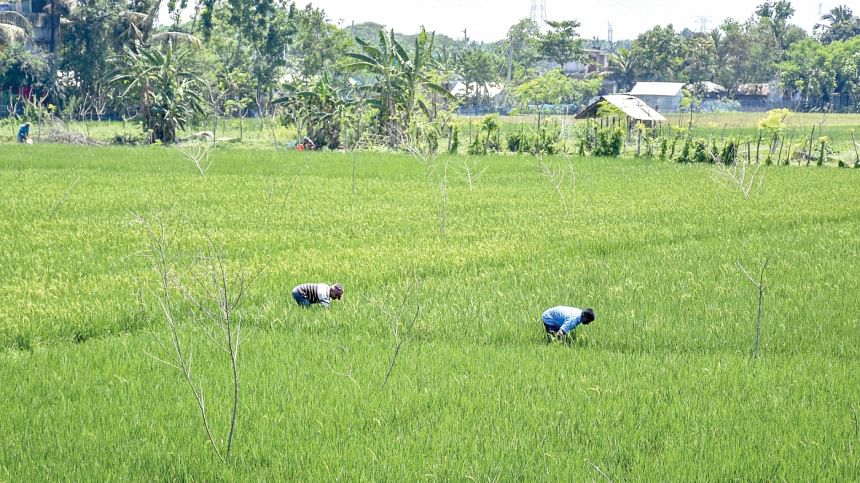
For the first time in his 30 years of farming, Samaresh Mondal is growing dry-season rice, locally named Boro, along with 50 of his peers in a synchronised manner in their locality of Satibunia under Botiaghata upazila of Khulna.
With support from the agriculture ministry, they have transplanted saplings using rice transplanters so that the plants grow and mature timely, enabling them to harvest the crop at the same time.
The initiative so far seems good for Mondal as he could save on farm labour costs as well as the time needed to cultivate the main crop Boro, which is highly dependent on irrigation.
"The crop requires a lot of water to grow. If we can irrigate all the fields at a time, it saves a lot," said the 53-year old farmer over phone last week.
He said synchronised cultivation saved his labour cost because of the use of rice transplanter for cultivation.
"We have been able to complete all the transplantation in three-four days," said Mondal.
"If we can harvest every crop timely, we will be able to grow an additional crop through synchronised cultivation."
Like Mondal and his 50 peers, farmers in several other districts of the country are growing paddy during the current Boro season in a synchronised manner with support from the agriculture ministry.
Synchronised cultivation is a method of cultivation, where the same variety of paddy is planted in one large block field combining the lands of a number of farmers.
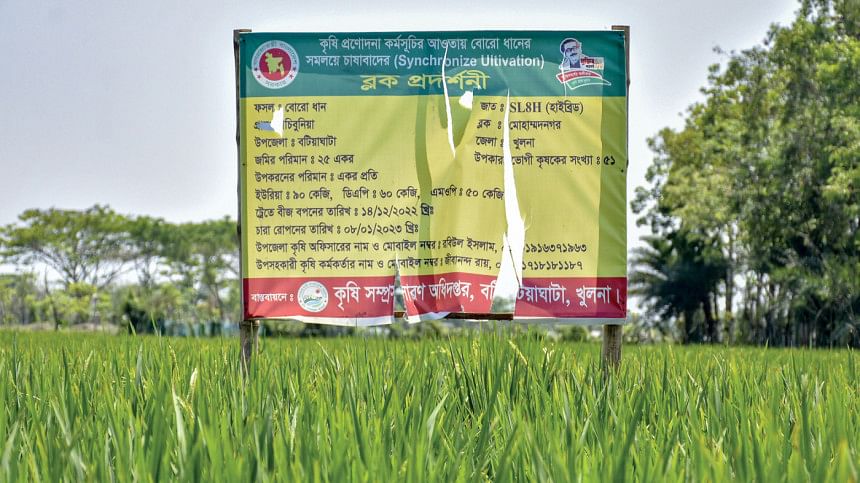
From seedbed preparation to harvesting, all processes are performed simultaneously with the help of machines.
The agriculture ministry started encouraging farmers to plant their crops in a synchronised manner and harvest simultaneously since 2020 with the objective to ensure full mechanisation of agriculture, reduce the turnaround time for other crops, increase yields and decrease production cost.
Agriculture officials said due to individual land ownership, farmers choose the types of crops and decide the planting and harvesting times on their own.
This creates differences in crop variety between two plots located side by side, resulting in separate harvesting times.
These factors act as a barrier to fully mechanised planting and simultaneous harvesting as, in absence of any common road inside farmlands, agro-machinery cannot move freely.
To address the issue, the agriculture ministry has been promoting synchronised cultivation by giving incentives to farmers.
Initially, it started encouraging community cultivation in 12 upazilas of 12 districts.
The area expanded to 3,050 acres in 61 districts the following year.
During this Boro season, the agriculture ministry has brought a total of over 20,600 acres under synchronised cultivation by providing seeds and fertiliser apart from transplanting seedlings using machines.
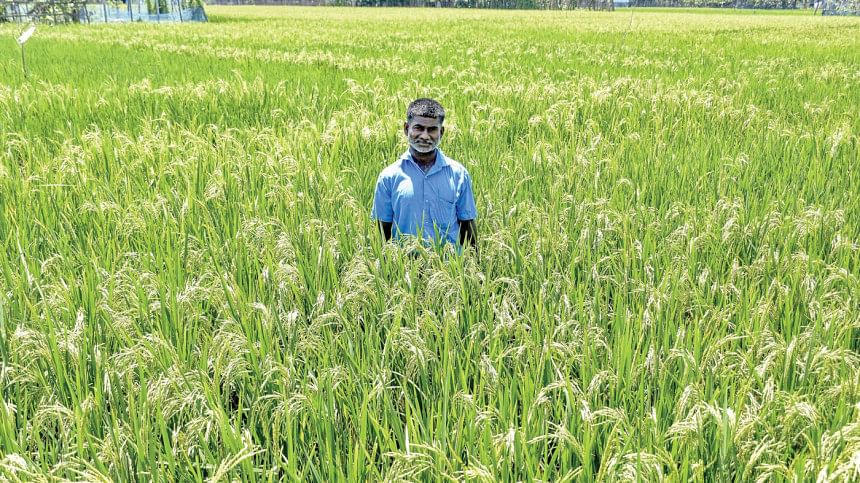
Of the area, 15,000 acres have been brought under synchronised cultivation in 300 upazilas this year under a Tk 3020-crore farm mechanisation project of the government, said Tarik Mahmudul Islam, project director of the Farm Mechanization through Integrated Management project.
In addition, the Department of Agricultural Extension (DAE) has organised farmers in 112 upazilas to demonstrate the benefit of synchronised farming so that growers join the bid.
Under the DAE's incentive programme, farmers have planted paddy on 5,600 acres under synchronised cultivation.
The government provides more than Tk 15 crore as incentives in the form of seeds and fertiliser, said two officials of the DAE.
The DAE provided six kilogrammes (kgs) of hybrid rice seeds for cultivation on one acre. It also provided 90 kgs of urea, 60 kgs of di-ammonium Phosphate (DAP) and 50 kgs of muriate of potash to farmers for each acre, according to officials.
Farm Mechanization through Integrated Management Project Director Islam said they have expanded the area of synchronised cultivation to 300 upazilas this year from 100 the previous year.
He said the government is giving importance to farm mechanisation to reduce the time taken between harvesting one crop to another.
"If we can harvest every crop timely, we will be able to grow an additional crop through synchronised cultivation," said Islam. "The target is to increase cropping intensity."
"But it is tough to involve farmers in any new initiative on short notice," he added.
Alid Hossain, a farmer who joined with Modal for synchronised cultivation, said he would grow crops in the same manner in the coming season if he sees success this year.
"So far, the crop condition looks good," the 42-year old farmer added.
Hossain then said mechanised cultivation provides higher yields and reduces cost.
"So, we farmers will be benefited if we can do so," he added.
Farmer Mondal also said that saline water intrudes through the sluice gates.
"This affects the paddy of many farmers. Saline water intrusion has to be prevented to protect growers," he said.
Many of Mondal's peers did not take it positively when seedlings were transplanted using transplanters.
"However, they have been proved wrong. The plants grow really well," he said, expecting that the Boro rice grown in a synchronised manner would be ready for harvest after a month.
Boro rice accounts for over half of the total rice produced in Bangladesh each year. The crop is harvested in the April-June period.

 For all latest news, follow The Daily Star's Google News channel.
For all latest news, follow The Daily Star's Google News channel. 

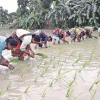



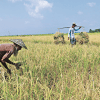


Comments